West Hartford Street Smart: Flagg Road

Audio By Carbonatix
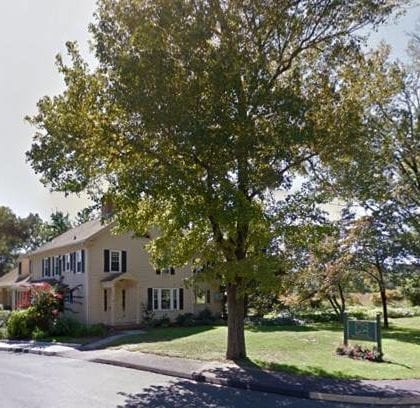
119 Flagg Road. Photo courtesy of Jennifer DiCola Matos
‘West Hartford Street Smart,’ written by Noah Webster House & West Hartford Historical Society Executive Director Jennifer DiCola Matos, brings to life the history of many of the town’s unique streets and neighborhoods.
By Jennifer DiCola Matos
The section of Route 44 that intersects with North Main Street in Bishops Corner is an extremely well-traveled road. With all the activity of the area, it would be easy to miss a quiet little street on the southwestern end of Bishops Corner named after the Flagg family. Flagg Road runs roughly parallel to Route 44 from Bishops Corner to Mountain Road. The area of Flagg road was likely settled in part due to its proximity to Route 44, which historically was known as the Talcott Mountain Turnpike and the Hartford-Albany Turnpike, one of the busiest “highways” in the area. Travelers going to and from the City of Hartford passed through this section of West Hartford by way of the Turnpike.
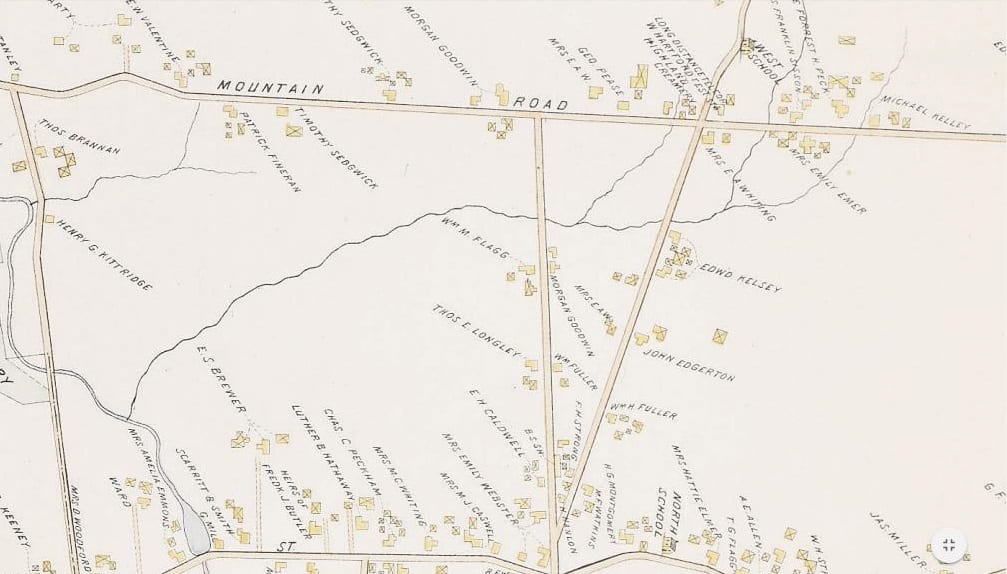
Map of West Hartford, 1896, showing William M. Flagg’s property. (Collection of the West Hartford Public Library)
One of the earliest residents of the Flagg Road area was Abijah Flagg, a native of Bristol, CT, and a farmer and shoemaker who, in 1786, had bought a large farm west of North Main Street and south of Route 44 in 1786. The nearness to the Turnpike certainly would have been convenient for Flagg to sell his wares and offer his repair service. The account books Flagg and his son George (who later took over the business) kept from 1787 to 1841 record the names of hundreds of clients with whom they did business.
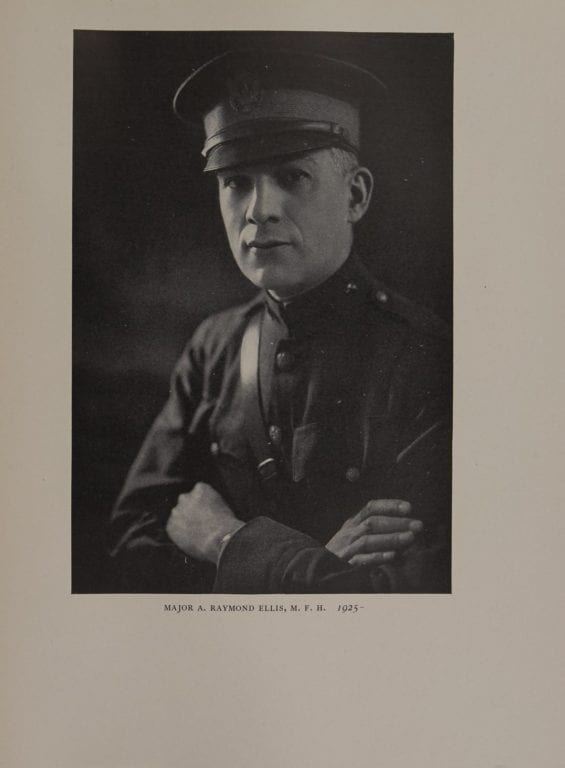
Image of Major A. Raymond Ellis, from Hunting in the United States and Canada by A. Henry Higginson, 1928.
Over the years, five generations of the Flagg family lived on the property, which was bordered by Mountain Road to the west, using it mainly as a dairy farm. The last owner, Howard R. Flagg, Abijah Flagg’s great-great-grandson, sold the land in 1922. In September 1923, the Flagg parcel got a new owner and a new name: World War I cavalry officer Major A. Raymond Ellis named the place “Westmoor Farm.”
Born in Nova Scotia in 1881, Ellis arrived in Hartford in 1908 and set up a successful architecture firm, evidenced by the astounding 21 commissions he received for private residences in the Prospect Avenue Historic District in a period of 10 years. Following WWI and reconstruction work done in France on behalf of the Red Cross, Ellis returned to West Hartford.
Upon taking up residence on the old Flagg farm, Ellis hatched a plan with other area war veterans to create a hunting park. In 1925, Ellis acquired a pack of hounds and started the “Westmoor Hunt,” which was officially recognized by the Hunts Committee of the National Steeplechase and Hunt Association in 1928.
At first West Hartford residents disapproved of the Hunt, but Ellis’ sponsorship of bi-annual family-friendly horse shows and polo grounds eventually won the neighbors over. Unfortunately, Ellis sustained significant financial loss during the years of the Great Depression. The Westmoor Hunt was disbanded in 1930 and the property was foreclosed upon in 1935.
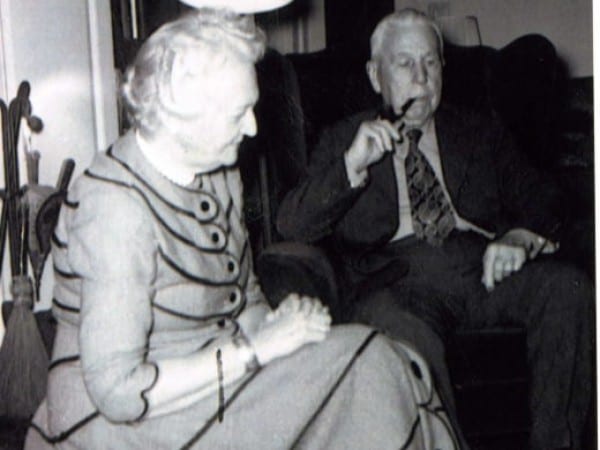
Photograph of Charles A. and Leila Hunter. (Collection of the Noah Webster House & West Hartford Historical Society)
In 1939, former Vice President of the Hartford Connecticut Trust Charles A. Hunter purchased the Westmoor Farm for $27,250.00. By 1941, Hunter and his wife Leila had purchased additional land closer to Mountain Road, bringing the total size of the parcel to 52 acres.
In addition to the polo field located at the western edge of the property near Mountain Road, there were also two houses on the property, one of which was the old Flagg homestead that had been built in 1825. Charles and Leila Hunter used the land as a horse farm and hired a renowned horse trainer, William Wouters, to take care of the horses and the farm.
In addition to their own horses, the Hunters allowed their friends to board their horses and ride on the farm. A.C. Petersen was a close friend and a charming home video (see YouTube video above) exists of “Andrew, Anna Claire, Bud and Raymond” horseback riding at the Hunter’s in 1942.
The Hunter family bequeathed the farm to the Town of West Hartford in 1973 and it is today the public education and recreation area known as Westmoor Park that now encompasses 162 acres.
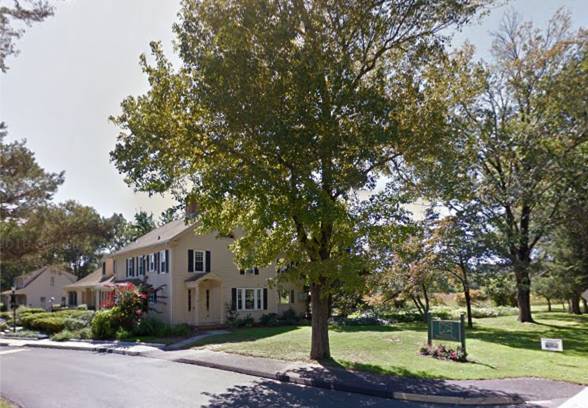
Photograph of 119 Flagg Road, today the home of Westmoor Park. The park’s education center is located within the original 1825 Flagg homestead. (Google Earth)
Westmoor Park’s main office and education center at 119 Flagg Road is located within the 1825 Flagg homestead. Besides the classic colonial at the eastern end of Flagg Road (number 11, built in 1766), the Westmoor Park building is the oldest on the street.
What is especially remarkable about the architecture found on Flagg Road is the variety of styles and time periods. Rather than some streets that are developed within a relatively quick period of time, Flagg Road appears to have been developed in a piecemeal fashion.
Besides the two houses previously mentioned, there are two houses from the 19th century (1887 and 1890, 38 and 65 Flagg Rd.) and two from the beginning of the 20th century (1903 and 1918, 44 and 118 Flagg Rd.) After these, there is at least one house from each decade of the 20th century ending in 1984 with 49 Flagg Rd. And for 21st century representation, the last house built on the street was 48 Flagg Rd. in 2001.
Despite the hefty residential development of the street, Flagg Road is one of the few streets left in West Hartford that gives a hint of its agricultural roots. If you want to get a sense of what West Hartford once looked like, take a ride down Flagg Road and go slowly as you pass Westmoor Park’s 162 acres. If you have time, pull into Westmoor Park’s parking lot. Smell the fresh air (or the barnyard, depending on the weather), listen to the quiet (or the sounds of the animals, depending on the time of day): this is West Hartford’s past.
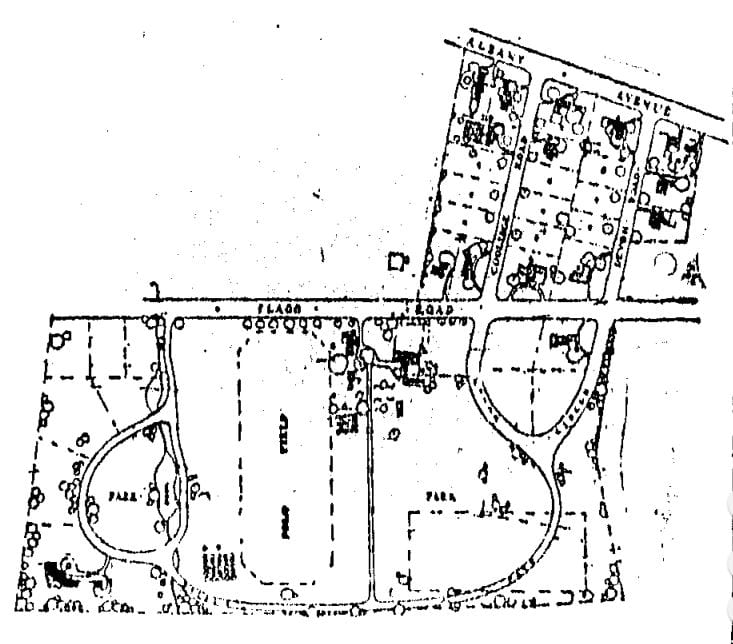
Ad for Westmoor Park development showing polo field in lower center. The Hartford Courant, July 1, 1928.
A special thanks to Jeff Murray for research assistance, as well as Abby Perkins and Raymond Petersen for their help with this story.
Jennifer DiCola Matos is the Executive Director of the Noah Webster House & West Hartford Historical Society. Her new series “West Hartford Street Smart” pays tribute to the Town’s rich and colorful past. If you have information about the history of West Hartford’s streets, please email her at [email protected].
The Noah Webster House & West Hartford Historical Society is a cultural destination where citizens can learn to understand and appreciate the past. The museum preserves the birthplace of Noah Webster, the founding father, educator, author, and lexicographer who taught generations of Americans what it means to be American. This National Historic Landmark is also a repository for the history of West Hartford, the community that molded Noah Webster’s future, and is still thriving over 250 years later. The historic house and exhibit spaces are open daily 1 p.m. until 4 p.m. For information on the museum’s extensive school and public programs, please visit www.noahwebsterhouse.org, call (860) 521-5362, or follow the museum on Facebook and Instagram (NoahWebsterHouse) and Twitter (@NoahWebHouse).
Like what you see here? Click here to subscribe to We-Ha’s newsletter so you’ll always be in the know about what’s happening in West Hartford!


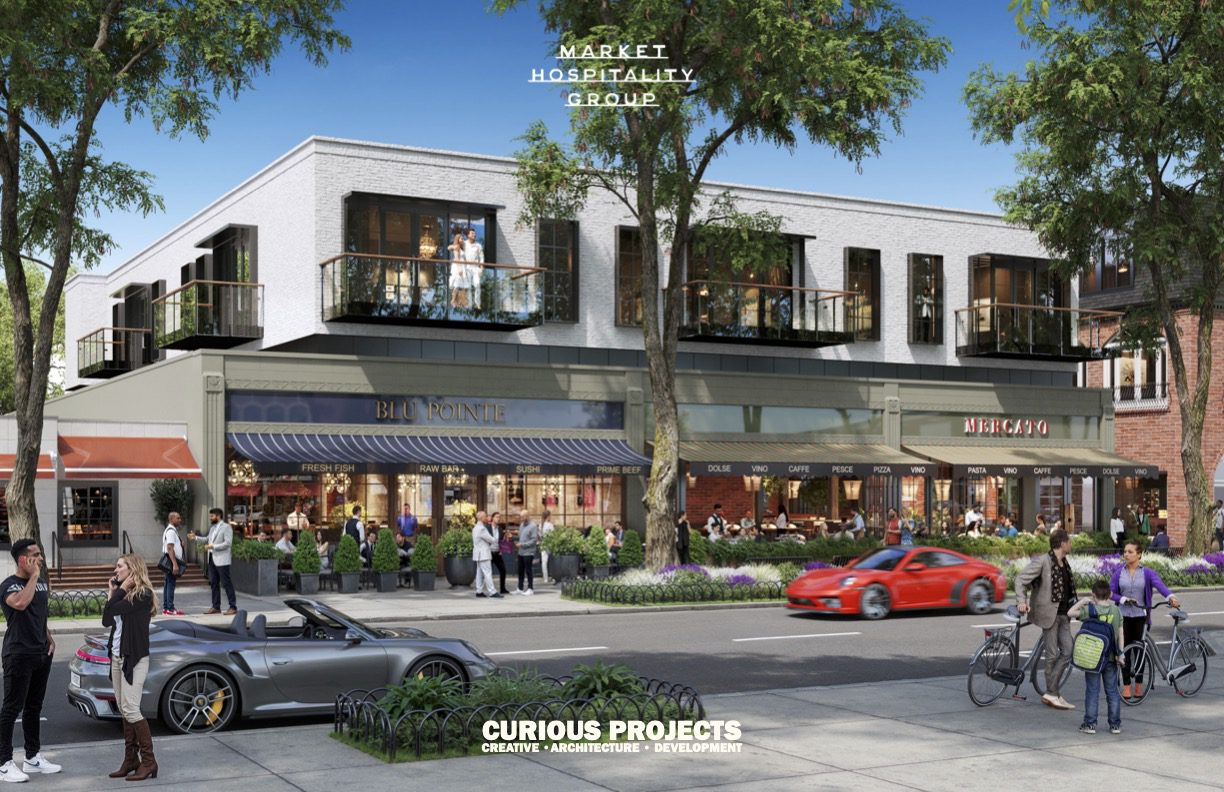

Hi Jennifer, thanks for the great article.
Also, rush to have a look at 66 Flagg Road, built in 1845, which is about to be demolished for new construction, by the same home builder who took down the bungalow at the corner of North Steele Road and Albany Avenue.